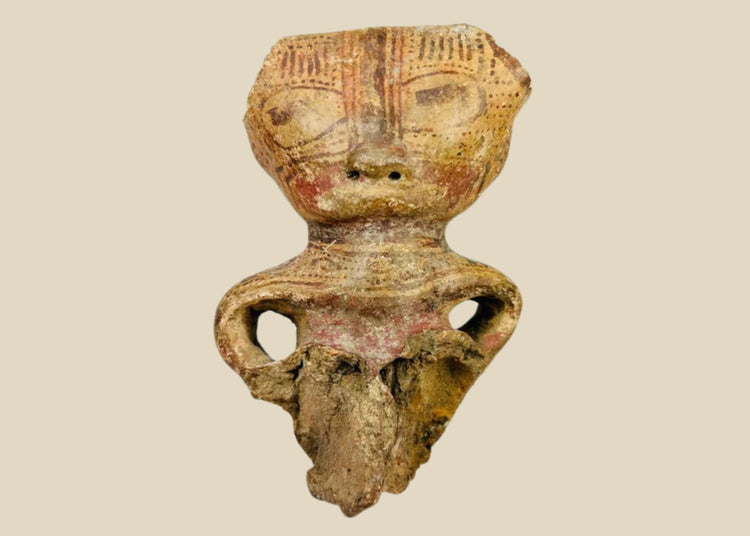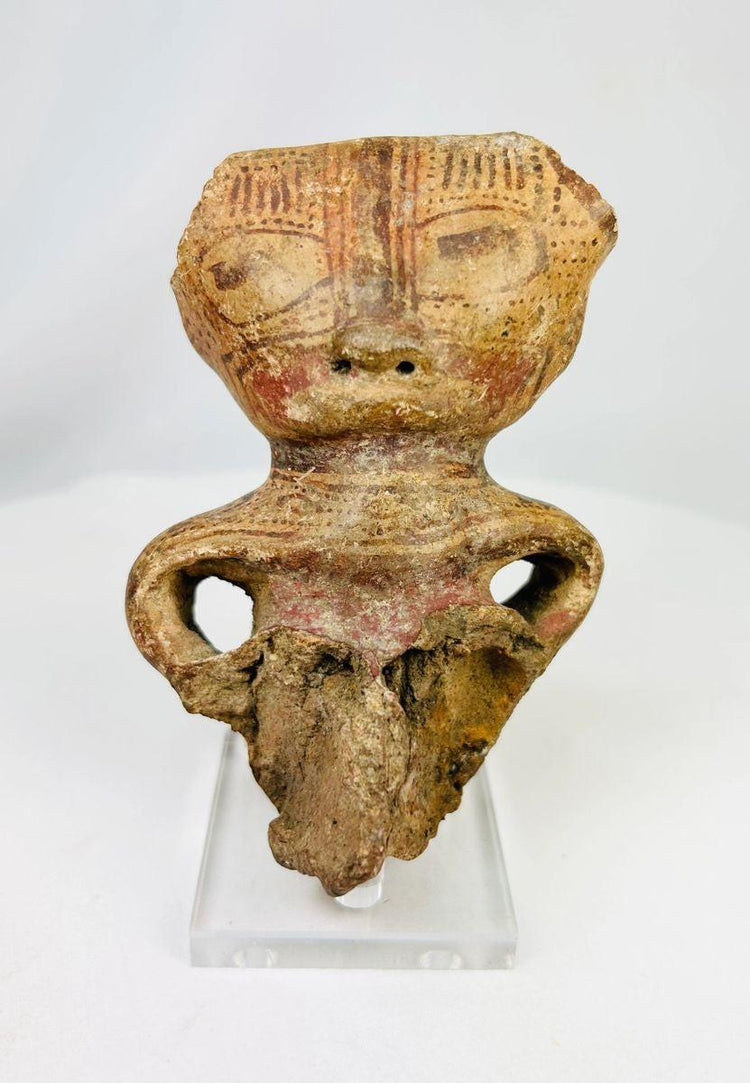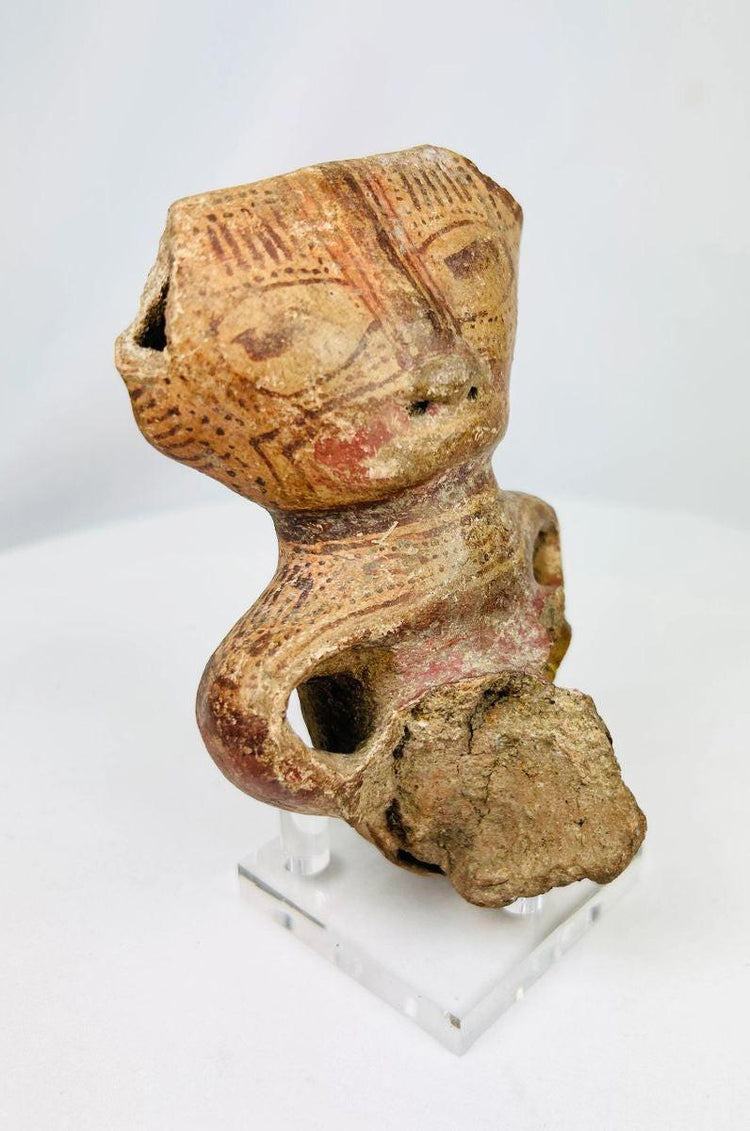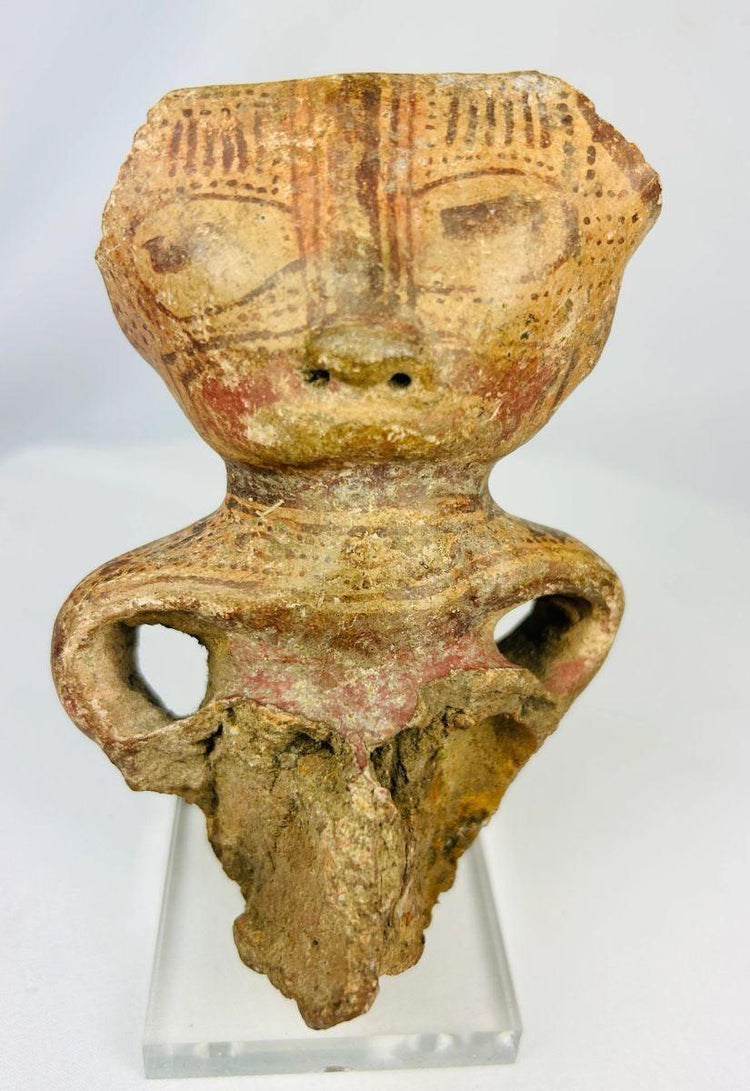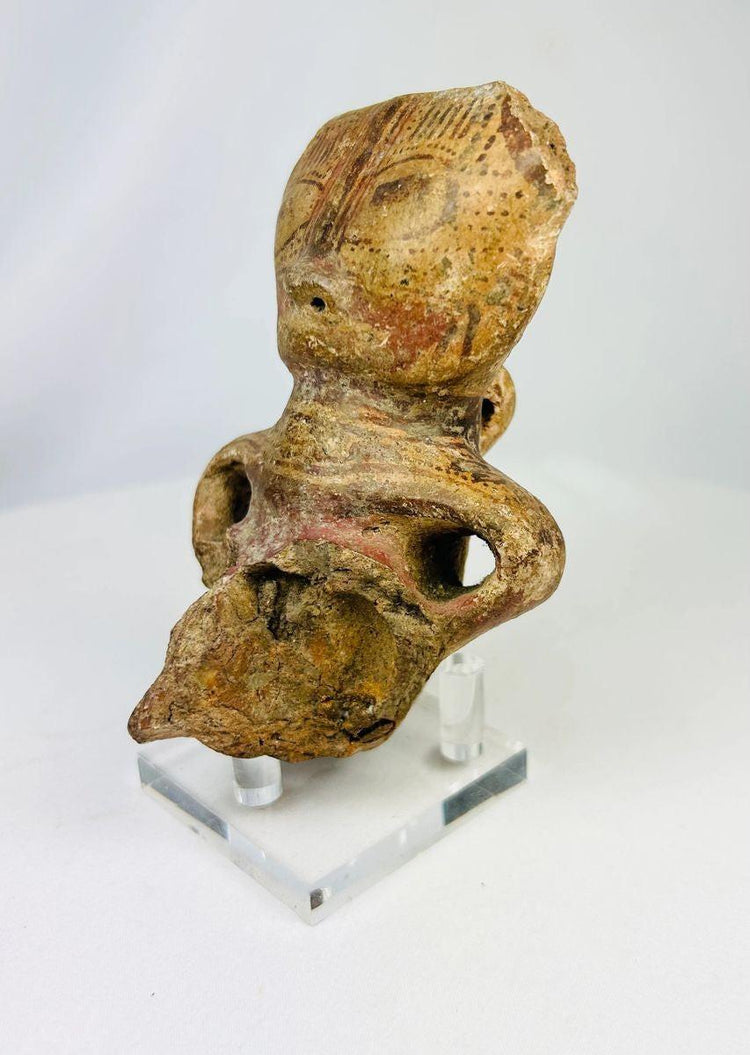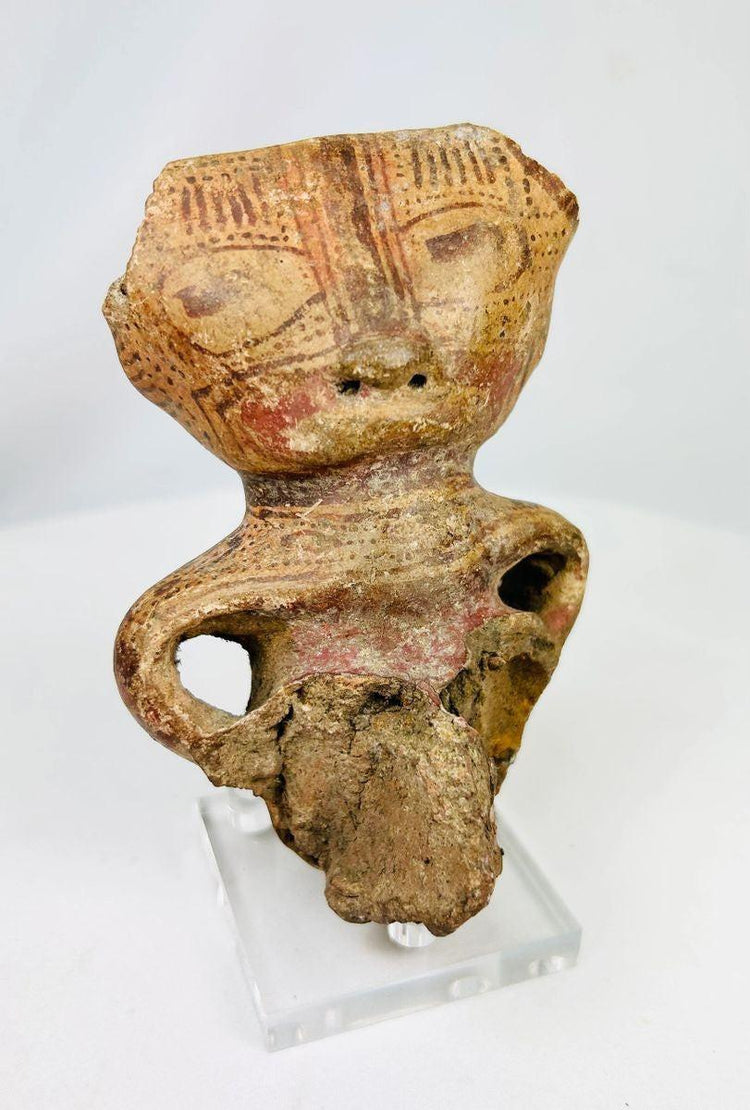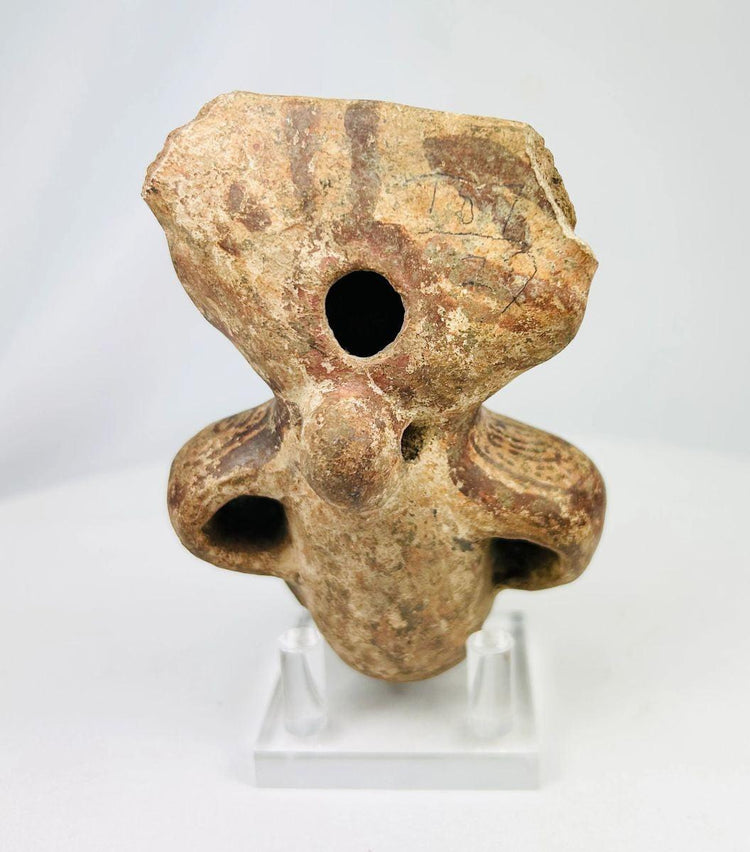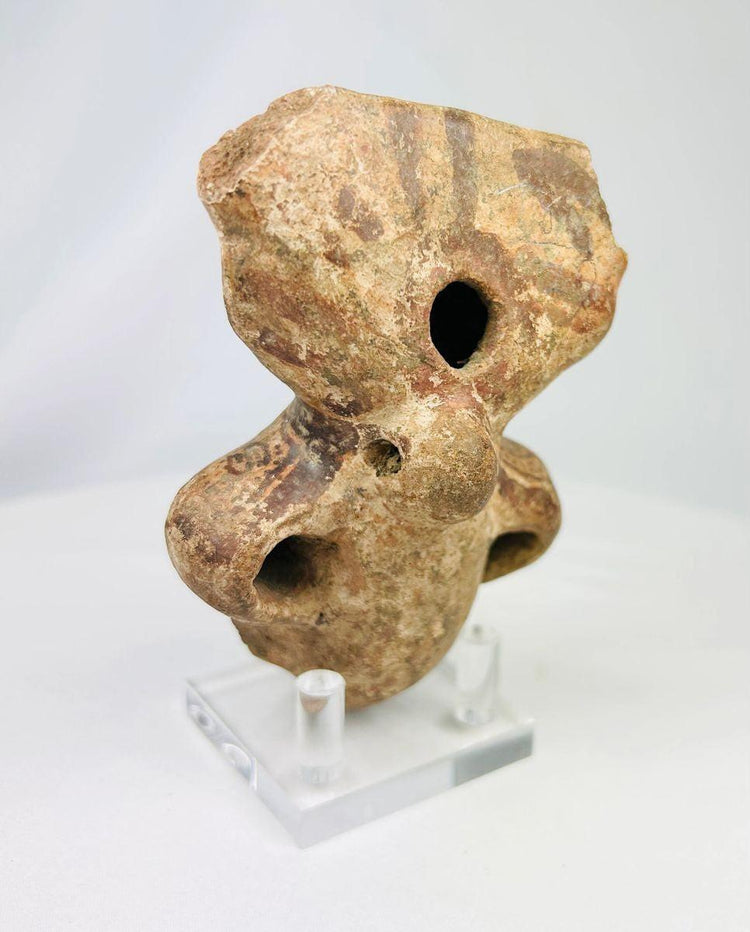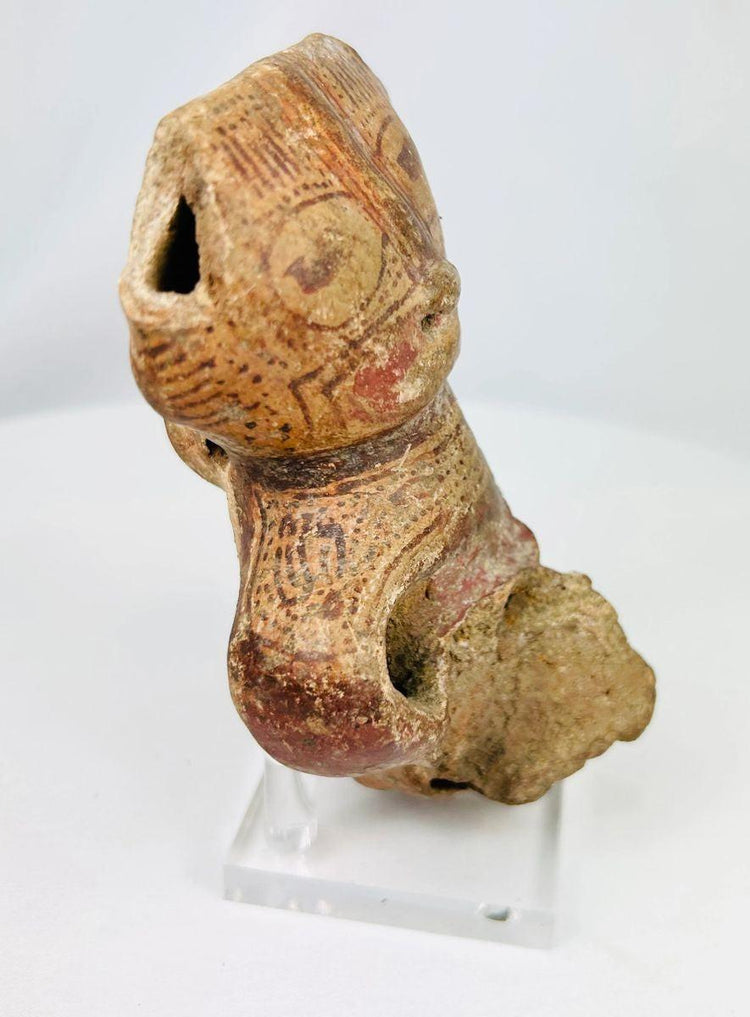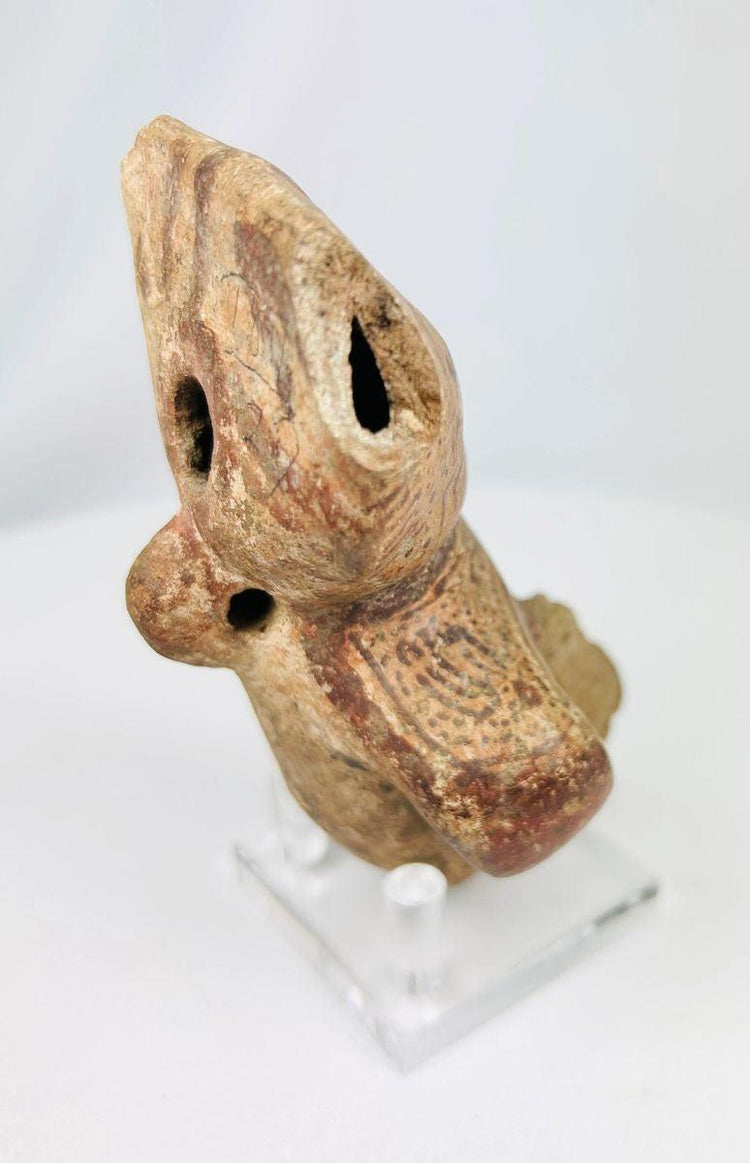Pre-Columbian West Mexican Terracotta Figurine Fragment | Circa 300 BCE - 300 CE
Description
More
Less
Historical Context & Origin
Region: West Mexico (Nayarit or Jalisco)
Material: Burnished terracotta with mineral-based pigments
Period: Late Formative to Early Classic, circa 300 BCE – 300 CE
Description
This rare fragmentary terracotta figurine head and torso exemplifies the expressive artistry of West Mexican shaft tomb cultures. The figure is adorned with intricate red and black painted linear designs on a buff clay surface, likely representing tattoos or ceremonial markings. Broad almond-shaped eyes, pierced nostrils, and geometric facial decoration reflect the stylized aesthetic of ancient Nayarit and Jalisco traditions. Though incomplete, the figure retains powerful presence and archaeological integrity, with visible burial accretions and patina enhancing its authenticity.
Features
- Stylized almond-shaped eyes and pierced nostrils
- Painted red and black linear motifs resembling tattoos or ceremonial markings
- Hollow-formed body with surviving torso section
- Strong burial patina with mineral encrustations
- Archaeological character consistent with shaft tomb excavations
Cultural Significance
Figurines of this type were traditionally interred in deep shaft tombs as companions to the deceased, symbolizing ancestors, deities, or ceremonial participants. Their painted motifs often emphasized spiritual transformation, lineage, or community identity, offering insight into the funerary practices and belief systems of pre-Columbian West Mexico.
Condition
Fragmentary condition with losses to the head and lower body. Original painted surface remains partially visible, with burial wear, mineral accretions, and encrustations consistent with age. Stable and well-suited for display.
Dimensions (approximate)
Height: 4.5 in
Age
Estimated 1,700–2,300 years old
Description
Historical Context & Origin
Region: West Mexico (Nayarit or Jalisco)
Material: Burnished terracotta with mineral-based pigments
Period: Late Formative to Early Classic, circa 300 BCE – 300 CE
Description
This rare fragmentary terracotta figurine head and torso exemplifies the expressive artistry of West Mexican shaft tomb cultures. The figure is adorned with intricate red and black painted linear designs on a buff clay surface, likely representing tattoos or ceremonial markings. Broad almond-shaped eyes, pierced nostrils, and geometric facial decoration reflect the stylized aesthetic of ancient Nayarit and Jalisco traditions. Though incomplete, the figure retains powerful presence and archaeological integrity, with visible burial accretions and patina enhancing its authenticity.
Features
- Stylized almond-shaped eyes and pierced nostrils
- Painted red and black linear motifs resembling tattoos or ceremonial markings
- Hollow-formed body with surviving torso section
- Strong burial patina with mineral encrustations
- Archaeological character consistent with shaft tomb excavations
Cultural Significance
Figurines of this type were traditionally interred in deep shaft tombs as companions to the deceased, symbolizing ancestors, deities, or ceremonial participants. Their painted motifs often emphasized spiritual transformation, lineage, or community identity, offering insight into the funerary practices and belief systems of pre-Columbian West Mexico.
Condition
Fragmentary condition with losses to the head and lower body. Original painted surface remains partially visible, with burial wear, mineral accretions, and encrustations consistent with age. Stable and well-suited for display.
Dimensions (approximate)
Height: 4.5 in
Age
Estimated 1,700–2,300 years old
You May Also Like


























